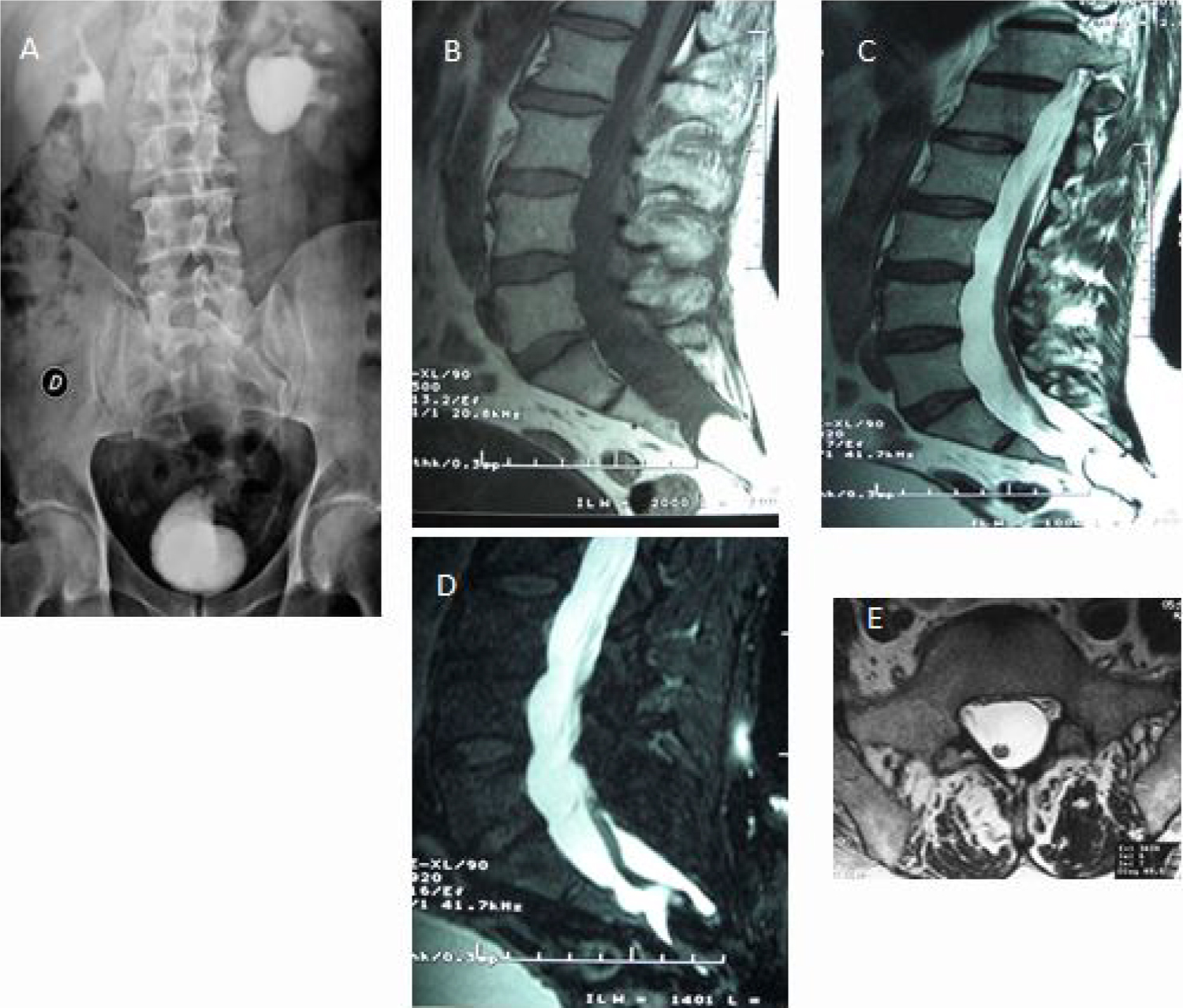Late Clinical Presentation of Tethered Cord Syndrome
Fifty six-years-old man with history of asthma and recurrent urinary tract infections, was presenting infrequent urine leakage for five years. The clinical examination was unremarkable. The urodynamic assessment revealed an overactive bladder with limited closing pressure. Intravenous Urography was performed and did not show any obstructive abnormalities, but we found out an incidental spina bifida of sacral vertebrae (Figure 1A). Therefore, a spinal MRI was performed and showed a tethered cord syndrome with intra-dural lipoma of the terminal filum (Figure 1B, Figure 1C, Figure 1D and Figure 1E). After oxybutinechlorhydrate as medical treatment, our patient showed marked symptom relief without recurrence for 12 months at follow up.
TCS comprises symptoms that results of fixation and excess strain on the spinal cord caused by stretching. Common symptoms include pain, motor deficits, sensory deficits, bladder dysfunction, and bowel dysfunction [1]. This affection is very uncommon in adults and detethering is generally recommended if patients have deteriorating symptoms. Asymptomatic patients with an incidentally found tethered cord should be closely monitored for onset of symptoms as our case [2].
References
- Shokei Yamada, Daniel J Won (2007) What is the true tethered cord syndrome? Childs Nerv Syst 23: 371-375.
- Kyle P O'Connor, Adam D Smitherman, Camille K Milton, et al. (2020) Surgical Treatment of Tethered Cord Syndrome in Adults: A Systematic Review and Meta-Analysis. World Neurosurgery 137: e221-e241.
Corresponding Author
Aziz Ahizoune, MD, Specialist of Neurology, Department of Neurology, Avicenne Military Hospital, 40000, Marrakech, Morocco, Tel: +(212)-6-62-27-40-02
Copyright
© 2020 Ahizoune A, et al. This is an open-access article distributed under the terms of the Creative Commons Attribution License, which permits unrestricted use, distribution, and reproduction in any medium, provided the original author and source are credited.





